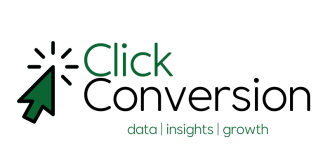In the vast and competitive landscape of digital advertising, the journey from a compelling ad to a successful conversion hinges on a critical intermediary—the landing page. Often underestimated, the landing page plays a pivotal role in turning a visitor into a customer. In this blog post, we unravel the importance of a well-crafted landing page for ads, exploring its impact on user experience, conversion rates, and overall campaign success.
First Impressions Matter
Your landing page is the digital storefront of your business. Just as a well-designed physical storefront attracts customers, a visually appealing and user-friendly landing page captures the attention of online visitors. It serves as the first impression users have after clicking on your ad. A cluttered, confusing, or slow-loading landing page can deter potential customers, leading to high bounce rates and missed opportunities.
Seamless User Experience
A good landing page ensures a seamless and intuitive user experience. When users click on an ad, they expect to find information relevant to what the ad promised. A well-designed landing page maintains consistency with the ad’s messaging, reducing confusion and providing a clear path for users to follow. The navigation should be straightforward, and the content should be easily digestible, guiding users toward the desired action.
Alignment with Ad Copy
The synergy between your ad copy and landing page content is crucial. If users are enticed by a specific offer or message in the ad, the landing page should deliver on that promise. Misalignment can lead to a sense of disconnect, causing users to lose trust and navigate away. The landing page should seamlessly continue the narrative initiated by the ad, reinforcing the value proposition and encouraging users to explore further.
Conversion Optimization:
The primary goal of many online ads is to drive conversions—whether it’s making a purchase, filling out a form, or signing up for a newsletter. A well-optimized landing page is designed with this end goal in mind. It should feature a clear and compelling call-to-action (CTA) that guides users toward the desired action. Relevant information, persuasive copy, and strategically placed CTAs work together to create an environment conducive to conversion.
Loading Speed Matters
In the fast-paced world of the internet, patience is a scarce commodity. Research indicates that users are likely to abandon a website if it takes more than a few seconds to load. This is particularly true for mobile users. A good landing page is optimized for speed, ensuring that users can access the information they seek without delays. Faster loading times not only enhance user experience but also contribute to improved search engine rankings.
Mobile Responsiveness
With a significant portion of internet users accessing content on mobile devices, a mobile-responsive landing page is not a luxury but a necessity. Google’s algorithms also prioritize mobile-friendly pages, impacting your ad’s visibility. A well-designed landing page ensures a seamless experience across devices, capturing the attention of users whether they’re on a desktop, tablet, or smartphone.
Trust and Credibility
Trust is the foundation of any successful business transaction. A professionally designed landing page instills confidence in visitors. Trust signals, such as customer testimonials, security badges, and clear privacy policies, contribute to the credibility of your business. A trustworthy landing page assures users that their information is secure and that your business is reputable, fostering a positive perception that can lead to conversions.
Data Collection and Analytics
Beyond immediate conversions, a well-crafted landing page facilitates data collection and analysis. Integrating analytics tools allows you to track user behavior, monitor conversion rates, and gather insights into the effectiveness of your campaign. This data is invaluable for making informed decisions, refining your ad strategy, and continually optimizing the performance of your landing page.
A/B Testing Opportunities
A/B testing, or split testing, involves comparing two versions of a landing page to determine which performs better. This iterative process allows you to experiment with different elements such as headlines, images, or CTAs to find the most effective combination. A well-designed landing page provides a canvas for ongoing testing and optimization, ensuring that your campaign evolves based on real user data.
Cost-Efficiency in Advertising Spend
Ultimately, a good landing page contributes to the cost-efficiency of your advertising spend. By delivering a seamless user experience, optimizing for conversions, and building trust, you maximize the return on investment (ROI) for your ad campaigns. A well-optimized landing page ensures that every click on your ad has the potential to translate into a valuable action, making your advertising budget work harder for your business.
Conclusion
In the dynamic realm of digital advertising, the importance of a well-crafted landing page cannot be overstated. It serves as the bridge between an enticing ad and a successful conversion. From the first impression to the final click, a user’s journey on your landing page shapes their perception of your brand and influences their decision to engage further. By investing time and effort into creating an effective landing page, businesses can unlock the full potential of their advertising efforts, ensuring a positive user experience and maximizing conversion opportunities.
ECOMMERCE TIPS STRAIGHT TO YOUR INBOX
Keep yourself informed about the newest trends and developments in eCommerce, particularly focusing on their impact on the Irish retail landscape. Sign up to receive our newsletter directly to your inbox.

